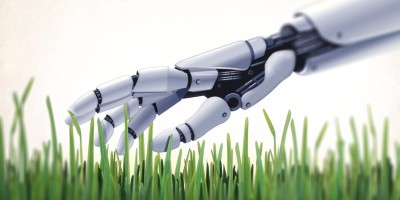Wound healing mechanisms differ depending on the sex, particularly in chronic wounds. Therefore, sex should be considered in the design of nanomedicine- and biomaterials-based wound healing therapies, both in preclinical and clinical testing.

References
Falanga, V. et al. Chronic wounds. Nat. Rev. Dis. Primers 8, 50 (2022).
Klein, S. L. & Flanagan, K. L. Sex differences in immune responses. Nat. Rev. Immunol. 16, 626–638 (2016).
Zeeuwen, P. L. J. M. et al. Microbiome dynamics of human epidermis following skin barrier disruption. Genome Biol. 13, R101 (2012).
Kalan, L. R. et al. Strain- and species-level variation in the microbiome of diabetic wounds is associated with clinical outcomes and therapeutic efficacy. Cell Host Microbe 25, 641–655.e645 (2019).
Freedman, B. R. et al. Breakthrough treatments for accelerated wound healing. Sci. Adv. 9, eade7007 (2023).
Hajipour, M. J. et al. Sex as an important factor in nanomedicine. Nat. Commun. 12, 2984 (2021).
Chen, L., Guo, S., Ranzer, M. J. & DiPietro, L. A. Toll-like receptor 4 has an essential role in early skin wound healing. J. Investig. Dermatol. 133, 258–267 (2013).
Mirani, B. et al. Smart dual‐sensor wound dressing for monitoring cutaneous wounds. Adv. Healthc. Mater. 12, 2203233 (2023).
Matoori, S., Veves, A. & Mooney, D. J. Advanced bandages for diabetic wound healing. Sci. Transl. Med. 13, eabe4839 (2021).
Huang, W. et al. The efficacy and safety of acellular matrix therapy for diabetic foot ulcers: a meta-analysis of randomized clinical trials. J. Diabetes Res. 2020, 6245758 (2020).
Zhang, P. et al. Global epidemiology of diabetic foot ulceration: a systematic review and meta-analysis. Ann. Med. 49, 106–116 (2017).
Gentzkow, G. D. et al. Use of dermagraft, a cultured human dermis, to treat diabetic foot ulcers. Diabetes Care 19, 350–354 (1996).
Hanft, J. R. & Surprenant, M. S. Healing of chronic foot ulcers in diabetic patients treated with a human fibroblast-derived dermis. J. Foot Ankle Surg. 41, 291–299 (2002).
Acknowledgements
L.G. and M.M. gratefully acknowledge financial support from the US National Institute of Diabetes and Digestive and Kidney Diseases (grant DK131417). I.P. acknowledges support from the US National Institute of Diabetes and Digestive and Kidney Diseases (grant R01DK136241). D.R.N. gratefully acknowledges the support of the Australian Research Council for a Future Fellowship (FT230100220).
Author information
Authors and Affiliations
Contributions
All authors contributed equally to this Comment.
Corresponding author
Ethics declarations
Competing interests
M.M. discloses that he is a co-founder of Academic Parity Movement and Targets’ Tip; he receives royalties/honoraria for his published books, plenary lectures and licensed patents. D.R.N. discloses that he is the co-founder and CEO of NanoStratus Pty. Ltd. He receives honoraria for his editorial responsibilities, plenary lectures and licensed patents. The remaining authors declare no competing interests.
Additional information
Related links
US National Institute of Health: https://orwh.od.nih.gov/sex-gender/orwh-mission-area-sex-gender-in-research/nih-policy-on-sex-as-biological-variable
Rights and permissions
About this article
Cite this article
Mahmoudi, N., Nisbet, D.R., Pastar, I. et al. Sex-specific nanomedicine- and biomaterials-based therapies of chronic wounds. Nat Rev Bioeng (2024). https://doi.org/10.1038/s44222-024-00191-4
Published:
DOI: https://doi.org/10.1038/s44222-024-00191-4
- Springer Nature Limited


